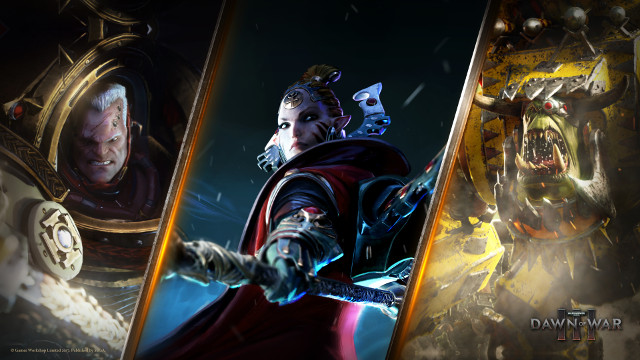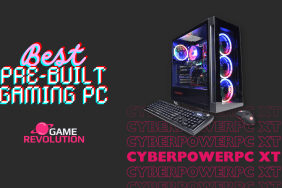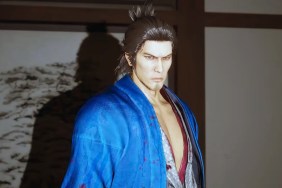The Dawn of War series has enjoyed reinventing itself with each release. It seems that Relic is in a constant state of creative flux in pursuit of shaking up the RTS formula. As a result of this, the differences between the first two titles are so vast they could be classified as different games altogether.
Now we’re at Dawn of War III, a game that carries a lot of baggage. Rumors abound of MOBA influence, simplification to appeal to a broader audience, and even elements of grinding added to pad gameplay. Is it true? Well… yes and no. This will be a complicated one, grab your bolters and let’s go.
A Galaxy Consumed By War
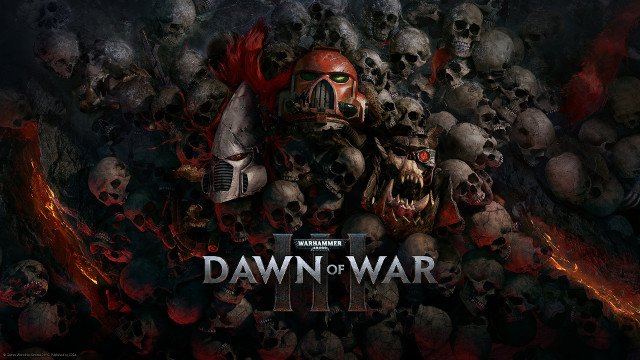
The campaign in Warhammer 40,000: Dawn of War III is a mixed bag. I kept flip-flopping on whether I hated it, or loved it. In the end, I thought it was “okay”. The story is slow to start, but it picks up its pace along the way if you’re patient. This is Warhammer 40,000, which isn’t necessarily known for having the most subtle of narrative arcs, to be sure. It doesn’t attempt to make commentary on life in the Imperium, and ultimately that’s fine by me.
I don’t want to say too much about the campaign as not to spoil anything. What I can tell you is horrendous pacing issues early in the campaign can put some players off. I mean, damn it, Relic! You write these fairly interesting story-arcs, then rip me away from them to play another faction. How can I care about what the Space Marines are doing if in the next mission I go to the Orks for a completely unrelated story? Bridging narratives together would have gone a long way toward making what’s here more compelling.
If you decide to endure the uninteresting story delivery during your early hours, it begins to smooth out the wrinkles in the plot. When the main characters start to interact, then it gets interesting, but that takes a while. And even when it culminates in some interesting revelations, its over before you know it. In other words, this isn’t a particularly lengthy campaign, and it’s not very replayable thanks to its linearity. There are opportunities during briefings to learn some more of the lore of the setting, but nothing in the way of narratively-involved side missions. Shame.
Missions themselves have minor variety, almost none use the Power Core concept from multiplayer. They are standard RTS style missions, content that have been done better in other games. If a non-linear, unique campaign is what you’re looking for, you won’t find it here. The standard array of primary objectives with forgettable side objectives are the main focus.
Skulls For The Skull Throne
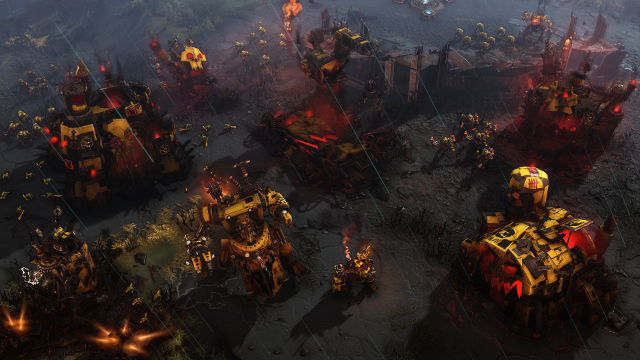
Skulls. I hate this idea immensely. They are a currency you earn in the Campaign and in Skirmishes. You spend them to unlock new Elites, and Doctrines, which you equip between missions, or in the main menu. These unlocks are vitally important, placing unwelcome emphasis on the pseudo currency.
The Skulls are problematic in that they seemingly exist for no reason. They add nothing beyond an element of grinding. In order to unlock everything, you must keep playing. Things that should be unlocked from the start are not, including Elites. At the time of this writing, you can’t buy Skulls, either. Have fun farming them if you can.
There is no reason for this currency system to exist. It adds padding to a game that doesn’t need it. It punishes people who are only here for the campaign, which might I suggest will end up being the majority of the audience. There are even Doctrines locked behind Elite levels. Each Elite can level up, unlocking more Skulls to spend, a unique skin, or a powerful Doctrine. Dawn of War III has the worst example of grind-oriented mechanics and artificial padding in the genre, and for some that might just be a deal-breaker.
And then there’s the out-of-battle UI (or meta-game UI). Put simply, it’s terrible. The interface is so awful it should be declared a Mutant and purged. Unlocking Elites and Doctrines is a painful chore, enough so that I often didn’t bother selecting new Elites between missions because I did not want to deal with that unholy, Chaos-infected mess. It’s unresponsive, it fails to convey useful information to you, and worst of all it’s buggy.
At one point, it attempted to tell me I could unlock new Elites and Doctrines. Okay, fine. I tried. I attempted to unlock new Elites, for five minutes. I clicked here, I clicked there… nothing. I decided the game must just be showing me the screen and there isn’t anything to unlock. Two missions later, I accidentally discover what was wrong. You have to click on the tiny-font button labeled “Info” and from there unlock things. You also can’t drag and drop Elites or Doctrines to your selection windows. You need to click on the spot for your Elite first, then the Elite itself. Ditto for Doctrines. This is 2017, drag and drop has been around since before Windows was invented. There’s no excuse for this mess.
But Will It Run Crysis?!
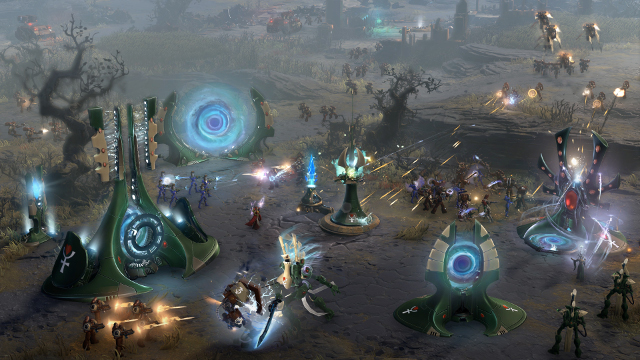
Dawn of War III is lovely to look at. I’d even go as far as call it gorgeous. Made better, on my not-so-good rig it runs well, indicating effort went into optimizing the engine. I never experienced any noticeable performance problems, the frame rate was stable the whole time through, even with dozens of units all over my screen. Explosions are effective, the models look good. The animation is fantastic, several of the units are just fun to watch as they attack. If you don’t smile when Gabriel attacks, and the entire enemy front line goes flying back dozens of feet, there is something wrong with you.
The graphical style is a departure from previous games, but it doesn’t hurt the experience in any real way. Colors are vibrant, and the units pop with detail. You can almost make out the etchings on their armor, if you could zoom in that far. Everything is loaded with detail, from the purity marks on Space Marines armor to the patterns in the Wraithbone the Eldar use. There are is a lot to see in each model, and I recommend you spend time in the Army Painter to see it all.
Unfortunately, all is not well in the graphical department. You cannot zoom in far at all, meaning you can’t really enjoy your awesome looking units up close. This is confusing, as Relic clearly put a lot of effort into each one, but denies you the chance to look at it up close while in a game. It’s a baffling design choice that I don’t understand, and one I hope they remedy in future patches.
There Is Only War
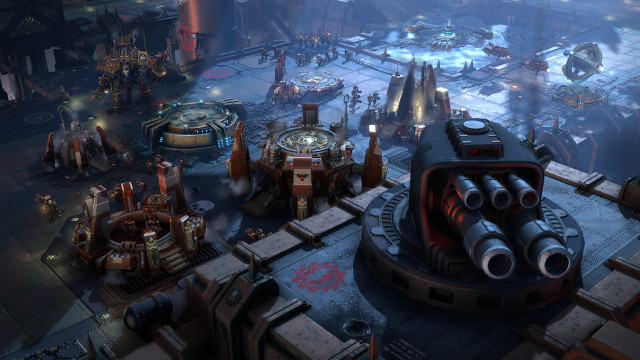
The gameplay itself is solid. Interactions feel like they have weight to them. Boots hit the ground, skimmers fly effortlessly over the battlefield, and bullets tear through things with meaty impacts. There is a lot to like here, from the uniqueness between each unit, to the wonderful feedback from using skills.
The in-game UI works fine, it conveys the information you need to know when you need to know it. There is a button for everything it seems, from fast unit selection to build orders. The minimap is well-done, it’s clearly visible with icons that aren’t too big nor too small. Everything is where it needs to be, and micromanaging massive forces is a breeze.
Games themselves are standard RTS fare with a few innovations. Elites bring powerful skills to battle, and each one can easily lay waste to standard units. Their skills can combo with other Elites, and each skill can inflict the enemy with a plethora of conditions, such as stunned, slowed, extra damage, and so on. Many Elites also buff your own units, or add new Doctrines once unlocked, such as the Ork Kommando giving several types of Ork units the ability to Rokkit-Jump, and when they land, they automatically go into stealth.
Players can hide their units inside certain types of terrain that automatically cloak the units, preventing the enemy from seeing them unless they too enter that patch of terrain. Several times this has allowed me to ambush the AI, or other players, with devastating effect. Relic has clearly paid great attention to terrain design. I found myself paying attention to my surroundings and using them for tactical purposes, which was a refreshing change from other RTS games where it is merely a backdrop to fight in.
Each faction plays differently, each equipped with their own strategies that go beyond the paper, rock, scissors gameplay that has defined RTS games for decades. Rarely do Units mirror each other. The armies were clearly designed to be asynchronous. Each has their own ultimates, such as a Warp Storm for the Eldar, or summoning Roks full of Orks. They all bring their own strengths and weaknesses to the table, making for a splendid strategy experience.
This Is Not a MOBA
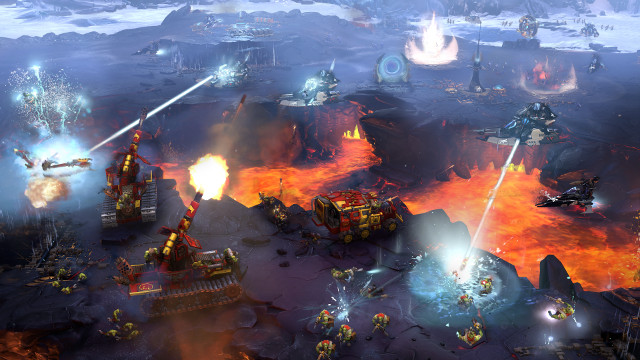
MOBAs. Whether you like them, hate them, or don’t care, their influence on the RTS genre can be felt in countless titles. You have likely heard that Dawn of War III is “inspired” by MOBA design. If that was true, it’d be a radical departure from previous entries, but not entirely unexpected given Relic’s penchant for changing how Dawn of War functions with each entry, and the incredible growth of the MOBA market during recent years.
But is it true? The simple answer is no. There is no MOBA here, there is only war.
The MOBA-like elements you may heard of are referring to how multiplayer works. It also refers to how Dawn of War III handles hero units, or “Elites” in this case. Much like previous entries, Dawn of War III employs heroes in important fashion. They each have multiple active-use skills, and passives. The similarities to MOBAs ends here as far as Elites are concerned.
The other similar element is multiplayer. Each side has a Core they must defend, and when the Core is destroyed that player is out of the fight. Powerful turrets stop enemy players from outright attacking your Core, while Shield Generators protect the Turrets. I played a few matches, completing a few skirmishes in the process. Each time, I didn’t feel like I was playing a MOBA, it definitely felt like a Dawn of War game. It’s a straight-up RTS with a fixed win or lose objective. It’s worth noting that this is the only game mode in multiplayer that is supported.
Conclusion
Warhammer 40,000: Dawn of War III is a decent RTS that adheres to many classical conventions. This bodes well for genre fans, a group that has long been forgotten by other developers who have since shifted focus to MOBA. Though, it brings with it an incredibly beautiful presentation that reminds us how much potential the Warhammer 40,000 universe really has. If only the story hit on this potential.
Some of the game’s flaws are significant, including the frustrating meta-game UI and problematic Skulls system. Thankfully, the highly functional gameplay goes a long way toward leading to a positive experience. So, I declare Dawn of War III cleared of all charges of sedition and heresy, but sentence it to a punishment of several lashings for wasting this Inquisitor’s time at key points during the interrogation.
Necrowolf is a community member of GameRevolution.
A PC copy of Warhammer 40,000: Dawn of War III was provided by its publisher. This game is exclusive to PC.
-
Outstanding gameplay and controls
-
Army variety powerfully represents the IP
-
The best Warhammer has ever looked
-
Makes great use of map topology
-
It's not actually a MOBA
-
That dreaded Skull system
-
Forgettable story that is slow to get moving
-
Main menu UI
